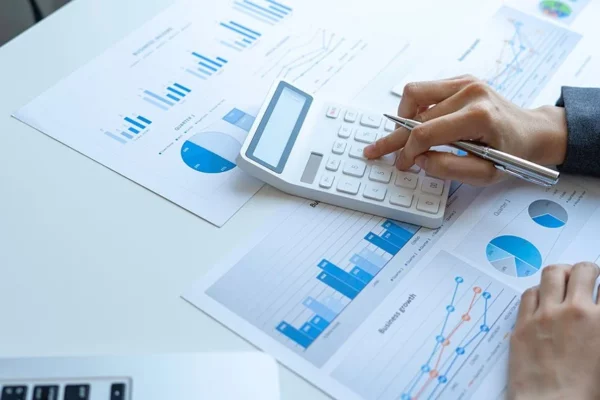
A chart of accounts lists the funds a business has designated and made accessible to document transactions in its general ledger.
A firm’s flexibility allows it to modify its chart of accounts to best meet its requirements, including adding funds as necessary.
It’s crucial to record every new or deleted account into the appropriate account whenever you change your company’s accounts. You can accomplish it using the chart of accounts. To better manage your company’s accounts, read on to find out how to construct and operate the chart.
What is the chart of accounts?
The account names and numbers pertinent to your business are listed in the chart of accounts, or COA. A chart of accounts typically has four divisions.
In a typical chart of accounts, the four central general ledgers or account types are:
- Asset accounts
- Liability accounts
- Income accounts
- Expense accounts
In other words, a chart of accounts is comparable to the board game Jenga. If you remove a block from one area of your business, you must add it back in another location.
By definition, accounting systems have a general ledger where your asset accounts (what you own) and liability accounts match (what you owe). Though helpful in principle, it’s difficult to practice in the real world.
Accountants frequently use other account types as the “missing Jenga blocks” to complete the general ledger because current assets and liabilities never precisely match.
You must first comprehend the elements that make up a chart of accounts better to understand the balance sheet and other pertinent financial statements. It can be simpler to obtain financial information if you know how to keep your company’s organizational structure organized.
Line items will identify the exact accounts within each category. Each line item represents an account within each category. On the chart of their company, some people might additionally show stock accounts. After all, operating costs and income accounts have been considered; everything left over is represented by an equity account.
How a chart of accounts works

The chart of accounts requires two entries for each entry: a debit from one account and a credit to another. If you run a neighborhood grocery store, for instance, and sell $20 worth of fresh produce, you would debit the cash account and credit the income account accordingly.
Double-entry accounting is used in this situation, and each time the sum of the two entries should be 0. Traditionally, debits are always on the left of the chart, and credits are always on the right.
If you’re unsure whether to credit or debit something, keep this in mind:
- Expenses and assets increase when debited.
- Liabilities, equity, and revenue decrease when debited.
The procedure is made simpler by small-business accounting software like Xero or Zoho Books, which manages debits and credits for you in the background. A standard chart of accounts will also be created for you, which you or your accountant can edit.
How is a chart of accounts organized?
A standard chart of accounts has four fields for each line: the account number, title, and balance.
Accountants have traditionally used the first digit of an account number to determine which account a transaction belongs to; for instance; assets accounts are often numbered 100 to 199, and liabilities accounts are typically numbered 200 to 299
This maintains the order of the books. The income statement, which sheds light on the general profitability of a company, is made up of expense and revenue accounts. The balance sheet, which reflects the company’s financial situation at that time and whether or not it owes money, comprises the remaining three charges.
- Income statement = expense + revenue accounts.
- Balance sheet = assets + liabilities + equity accounts.
The accounts used to generate the balance sheet come first, and the ones used to create the income statement come after in the chart of accounts.
Setting Up the Chart of Accounts
The specified accounts while creating a chart of accounts largely depend on the type of business being run. For instance, a taxi company will have some reports that are unique to the industry and generic accounts that apply to all companies.
For instance, the taxi company will include a fuel expense account, which is not typical for businesses. Still, it will omit an inventory account because it is a service company and does not keep stock.
Each of the five major categories is given a set of numbers, with blank spaces at the end to accommodate future additions of more accounts. Additionally, the numbering needs to be uniform to make it simpler for management to roll up data from one period to the next.
How to set up the chart of accounts

Your chart of accounts is comparatively easy to set up. You must first make a blank chart and assign the columns to it. Typically, the chart of accounts is divided into the following three columns:
- Create account names for business
The account name is the formal name of the company account you disclose information about (i.e., bank fees, cash, taxes, etc.).
- Give business accounts account numbers.
Each account name is given a unique account number. For each account, the most frequent number combinations are:
- Resources: 1,000 to 999
- Liabilities between 2000 and 2999
- Salary: $4,001 to $4,999
- Maintenance costs: 6,000 to 7,999
- Classify each of the four account category kinds using the account names.
It would help to give each account name a general ledger or account type. Select from the asset, liability, income, and expense account types.
An illustration of your chart once you’ve included all the required elements is shown below. You can start adding particular account names and the account category they belong to once you’ve set up your chart.
Organizing your chart of accounts: some tips
As you continue to add or modify accounts, keeping your COA structured is crucial now that it has been set up. You can successfully set up your chart of accounts by using the following advice.
Use simple account names.
Please keep it simple while creating your line items for the first time. Ensure your line items have titles that you and your accountant can understand. Use descriptive headings such as “bank fees” or “bottling equipment.”
Create sub-accounts
You could find that you eventually want to add a new line item for every transaction. However, doing so can make your company’s organizational chart disorganized and difficult to navigate. Use the sub-accounts in your accounting program instead.
Consider the scenario when you need to open a new account specifically for “PayPal fees.” Create a sub-account under “bank fees” rather than adding a new line to your chart of accounts. Similar to this, you might create a “rent expense” account with sub-accounts for “building rent” and “equipment rent” if you pay rent for a building or piece of equipment.
Add financial statements
If you want to use the cash flow, balance sheet, or income statement for each account, add a column for that document to your COA. For instance, income statements are often used for spending accounts, but balance sheets are typically used for asset and liability accounts.
Track account movement
Because your company’s chart of accounts is a living record, funds will inevitably need to be added or eliminated over time. The primary practice for adding and deleting accounts is to add new versions as they come in and wait to delete any existing arrangements until the end of the year or quarter.
Categories on the Chart of Accounts
Each of the accounts in the chart of accounts corresponds to the two main financial statements, i.e., the balance sheet and income statement.
Balance sheet accounts
Such accounts are required when creating a balance sheet for the business. Balance sheet accounts comprise the following:
- Asset accounts
The company has included all the asset categories in the asset account.
Intangible assets (such as patents, software, and trademarks) and current assets (including cash on hand and accounts receivable. It is possible to assign sequential numbers to each asset account, such as 1000, 1020, 1040, 1060, etc.
The current assets are listed first, followed by the fixed assets, in the conventional balance sheet format.
- Liability accounts
All the debts the company owes its creditors are listed in its liability accounts. Accounts with the word “payable” in their names, such as accounts payable, invoices payable, salaries payable, interest payable, etc., are typically considered liabilities.
The traditional balance sheet pattern is also followed by liability accounts, which list current obligations first, followed by long-term liabilities. Each liability account’s numbering scheme can begin with 2000 and employ a simple order to understand and compare accounting periods.
- Owner’s equity accounts
Equity is the value that remains in the company after all liabilities and assets have been subtracted. How valuable a corporation is to its shareholders is determined by its owner’s equity.
Common stock, preferred stock, and retained earnings are some items that make up the owner’s equity accounts. For a large corporation, the owner’s equity account numbering scheme can carry over from the liability accounts and range from 3000 to 3999.
Income statement accounts
The income statement accounts’ main components include the revenue and expense accounts.
- Accounts of revenue
The company’s earnings from selling its goods and services are captured and recorded in revenue accounts. Revenues unrelated to the business’s primary activities are not included; only payments relevant to the firm’s core functions are included.
Sales discounts account, sales returns account, interest income account, etc. are a few subcategories that could be a part of the revenue account. Each income account’s numbering can begin at 4000.
- Accounts of expenses
In the chart of accounts, the expense account is the last category. It contains a list of all the accounts used to record the funds utilized to produce revenue for the company. The costs can be connected to particular corporate operations or revenue-generating items.
Making an account for each item recorded on IRS Tax Form Schedule C and creating additional charges unique to the firm’s nature are two straightforward ways to arrange the expense accounts. Numbers starting at 5000 can be allocated to each spending account.
Conclusion
A chart of accounts can be a helpful tool that helps the management of a firm to quickly and efficiently record transactions, create financial statements, and examine revenues and costs in-depth.
Using a solid chart of accounts, you can get a general idea of how much money is made or spent in each department of your company. Making educated judgments and adhering to financial reporting rules will be more straightforward.

Pingback: What is a Chart of Accounts? Eboxman - Dropship Ninja Guide